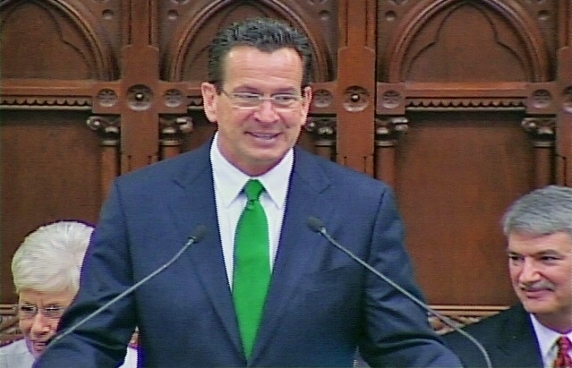A firestorm now rages in Texas over transparency and accountability in higher education. Governor Rick Perry and the Texas Public Policy Foundation have encouraged regents to peek inside the ivory towers, and the universities are responding. History argues that we must peek.
Perry wrote on May 13 that “efforts to protect taxpayers and get more results from our schools are not universally welcomed in academia. The attitude of some in the university world is that students and taxpayers should send more and more money, and then just butt out.” He adds, “Four-year graduation rates at Texas institutions of higher education currently average just 28.6 percent.”
Asserts the governor: “The big lie making the rounds in Texas is that elected or appointed officials want to undermine or deemphasize research at our colleges and universities. That disinformation campaign is nothing more than an attempt to shut down an open discussion about ways to improve our state universities and make them more effective, accountable, affordable and transparent.” Such a goal nationwide at all universities would be laudable.
A barn burning study last month from Richard Vedder’s Center for College Affordability and Productivity revealed that of the more than 4,200 faculty members at the University of Texas at Austin, the 840 most productive faculty members teach an extraordinary 57 percent of student credit hours, while the least productive 840 members teach only 2 percent of student credit hours.
But this disparity is not the greatest abuse.
Rather it is the fact that of the faculty members outside the 20 percent most productive teachers, the average teaching load is 63 students a year. That borders on semi-retirement – research and publications notwithstanding.
Former Harvard dean Harry Lewis writes in Excellence Without a Soul that universities have shifted priorities to research first, students second. “The ultimate source of this cultural shift,” he writes, “is the replacement of education by research as the university’s principal function.”
But not all research is valuable. John Silber, former dean at UT-Austin and president of Boston University, recently told the Texas Tribune that many products of research “aren’t worth anything.”
Hofstra University law professor Richard Neumann reported at a conference in April that it costs approximately $100,000 for a tenured law professor to publish one article per year and that 43 percent of law review articles are never cited by anyone. In Neumann’s words, “At least a third of these things have no value.”
World Shakespeare Bibliography reports that from 1980 to mid-2010, there were 39,222 scholarly articles published on Shakespeare. Professors can research and publish anything they wish; it’s a free country. But should they be given reduced teaching loads, at student and taxpayer expense, to publish the 39,223rd article?
Lewis reports that “academic presses now publish books selling fewer than 300 copies,” and he quotes a humanities editor as saying that “the demands of productivity are leading to the production of much more nonsense.”
Yet former Harvard president Derek Bok reports in Our Underachieving Colleges that “fewer than half of all professors publish as much as one article per year.”
A September 2010 issue of The Economist reports that “senior professors in Ivy League universities now get sabbaticals every third year rather than every seventh. This year, 20 of Harvard’s history professors will be on leave.” Perhaps one reason universities may not want regents to peek inside the ivory tower is that it’s somewhat empty–with the exception, of course, of adjuncts and young, inexperienced teaching assistants.
When a parent asked then Dartmouth president John Kemeny what the most important question was that parents should ask to determine where to send their children, he responded, “Ask them who teaches the freshmen.” That is generally not professors at our elite research universities.
A Pew Research Center study released in May reports that the average college senior now graduates with more than $23,000 in outstanding loans. Harper’s reports that U.S. student-loan debt will reach $1 trillion by the end of 2011. And the Project on Student Debt reports that since 1978, tuition at U. S. colleges has increased more than 900 percent–sharing similarities with a housing bubble.
Reform will never come from within the university. Bok explains why: “In theory, presidents and deans are supposed to counteract self-interested behavior to make sure that the legitimate needs of students are properly addressed. In practice, however, academic leaders often fail to fulfill this responsibility.”
He elaborates, “Ultimate power over instruction and curriculum rests with the faculty. While leaders have considerable leverage and influence of their own, they are often reluctant to employ these assets for fear of arousing opposition from the faculty that could attract unfavorable publicity, worry potential donors, and even threaten their jobs.”
Regents are entrusted with the statutory authority and fiduciary responsibility to set policy at universities. They are the mediating agent between the university and the public. As such, they should be both cheerleaders and governors. It is entirely fair and appropriate that they examine the relationship between teaching and research–and ask of all research pursuits: how does each serve students or wider societal needs? Regents can then ensure that the best worlds of teaching and research are achieved.
Ronald L. Trowbridge, Ph.D., is a senior fellow at the Texas Public Policy Foundation, a non-profit, free-market research institute based in Austin. Trowbridge formerly served as vice president of Hillsdale College in Michigan.

COMMENTS
Please let us know if you're having issues with commenting.